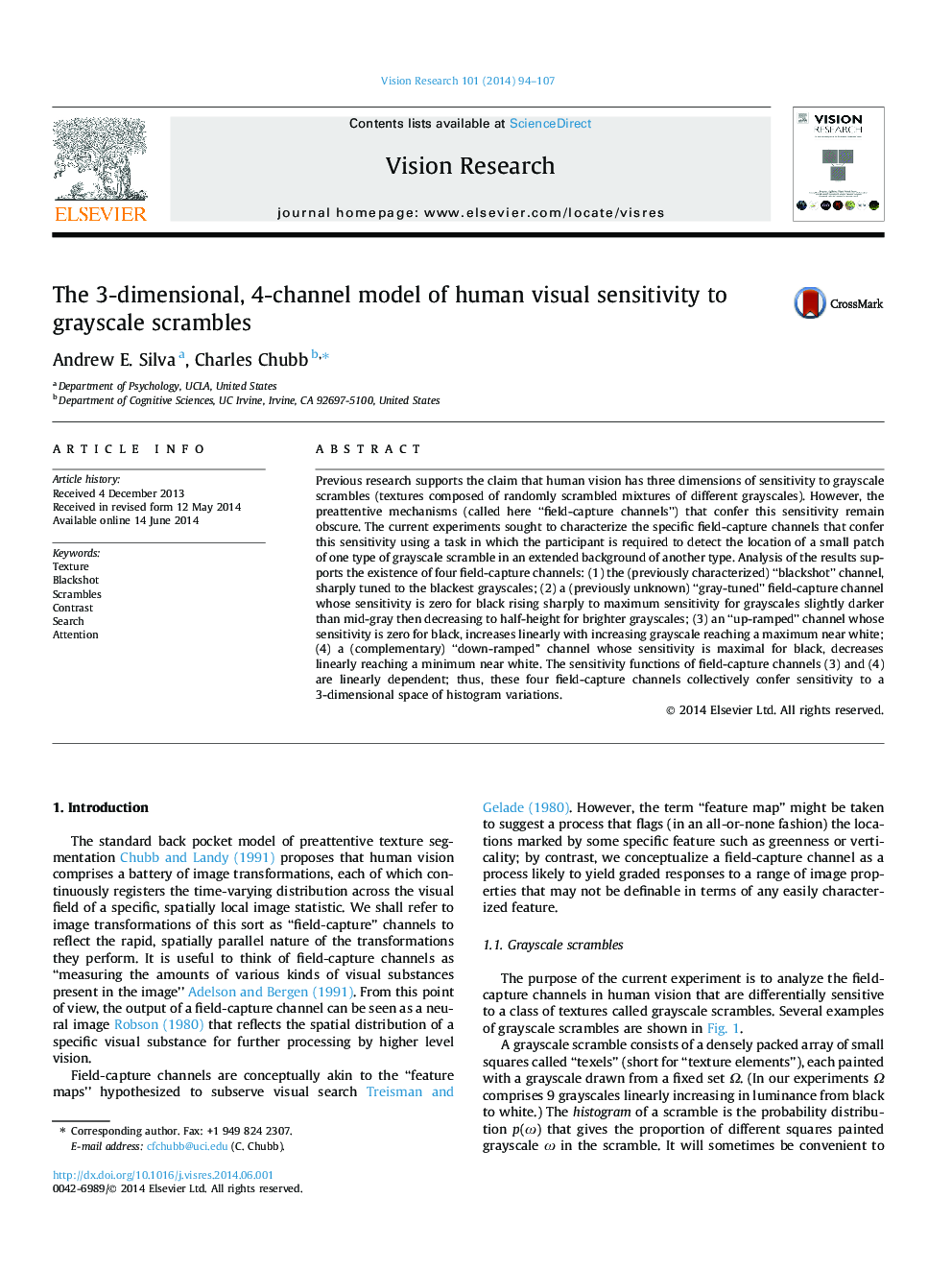| Article ID | Journal | Published Year | Pages | File Type |
|---|---|---|---|---|
| 4033717 | Vision Research | 2014 | 14 Pages |
•A texture search paradigm reveals four channels sensitive to grayscale scrambles.•One of these is the blackshot channel, highly sensitive to grayscales near black.•Another is tuned to grayscales near the mean.•A third has sensitivity that ramps up with grayscale, hitting a maximum near white.•The fourth has sensitivity that varies as the negative of the sensitivity of the third.
Previous research supports the claim that human vision has three dimensions of sensitivity to grayscale scrambles (textures composed of randomly scrambled mixtures of different grayscales). However, the preattentive mechanisms (called here “field-capture channels”) that confer this sensitivity remain obscure. The current experiments sought to characterize the specific field-capture channels that confer this sensitivity using a task in which the participant is required to detect the location of a small patch of one type of grayscale scramble in an extended background of another type. Analysis of the results supports the existence of four field-capture channels: (1) the (previously characterized) “blackshot” channel, sharply tuned to the blackest grayscales; (2) a (previously unknown) “gray-tuned” field-capture channel whose sensitivity is zero for black rising sharply to maximum sensitivity for grayscales slightly darker than mid-gray then decreasing to half-height for brighter grayscales; (3) an “up-ramped” channel whose sensitivity is zero for black, increases linearly with increasing grayscale reaching a maximum near white; (4) a (complementary) “down-ramped” channel whose sensitivity is maximal for black, decreases linearly reaching a minimum near white. The sensitivity functions of field-capture channels (3) and (4) are linearly dependent; thus, these four field-capture channels collectively confer sensitivity to a 3-dimensional space of histogram variations.
